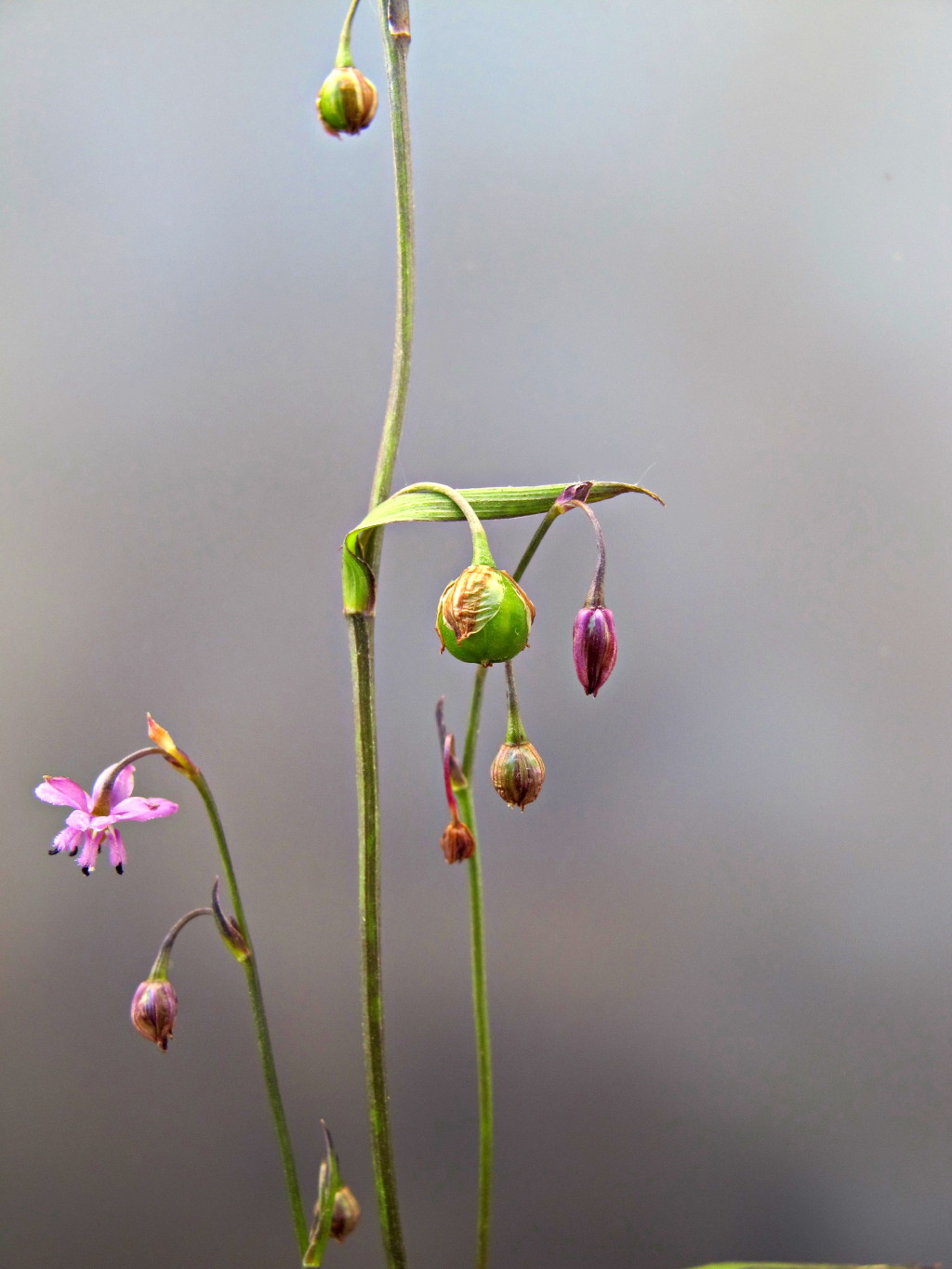Arthropodium minus
R.Br. Small Vanilla-lilyPlants tufted, to c.50 cm high. Roots tuberous, tubers plump, cylindrical to narrow-ellipsoid, c. 2–6 cm long, to c. 7 mm diam., virtually sessile on rootstock. Leaves linear, 5–30 cm long, 1–5 mm wide, flat, initially erect, but usually withering before flowering. Inflorescence erect, simple, rarely few-branched. Flowers solitary (rarely paired) in bract axils, usually pendent; perianth segments spreading or recurved, 3–5 mm long, pale to rich mauve, petals broader than sepals; stamens shorter than the perianth segments, filament hairs white to purple, filament sometimes with narrow lobes near the base of the hairy section, anthers dark purple, or perhaps sometimes greenish, soon dehiscing and recurving, exposing the pale inner surface. Capsule ovoid, c. 5 mm long. Seeds 2–3 mm long. Flowers Aug.–Dec.
LoM, MuM, Wim, GleP, VVP, VRiv, RobP, MuF, GipP, OtP, Gold, CVU, GGr, DunT, NIS, EGL, EGU, HSF, HNF, VAlp. Also SA, NSW. Occurs chiefly in drier woodland and grassland communities throughout lowland Victoria, occasional in dried, seasonally swampy ground and on seasonally wet mossmats on rock ledges etc. Uncommon in the far north-west and far east and becoming rare near settled areas.
Specimens from the northern mallee and a few scattered localities elsewhere (volcanic plain near Melbourne, far East Gippsland) are distinctive in having conspicuously jointed pedicels; however, the taxonomic significance of this feature is unclear. Some mallee plants have more or less erect flowers and fruits. It is likely that several cryptic taxa await elucidation.
Conran, J.G. (1994). Liliaceae. In: Walsh, N.G.; Entwisle, T.J., Flora of Victoria Vol. 2, Ferns and Allied Plants, Conifers and Monocotyledons, pp. 637–686. Inkata Press, Melbourne.
 Spinning
Spinning


